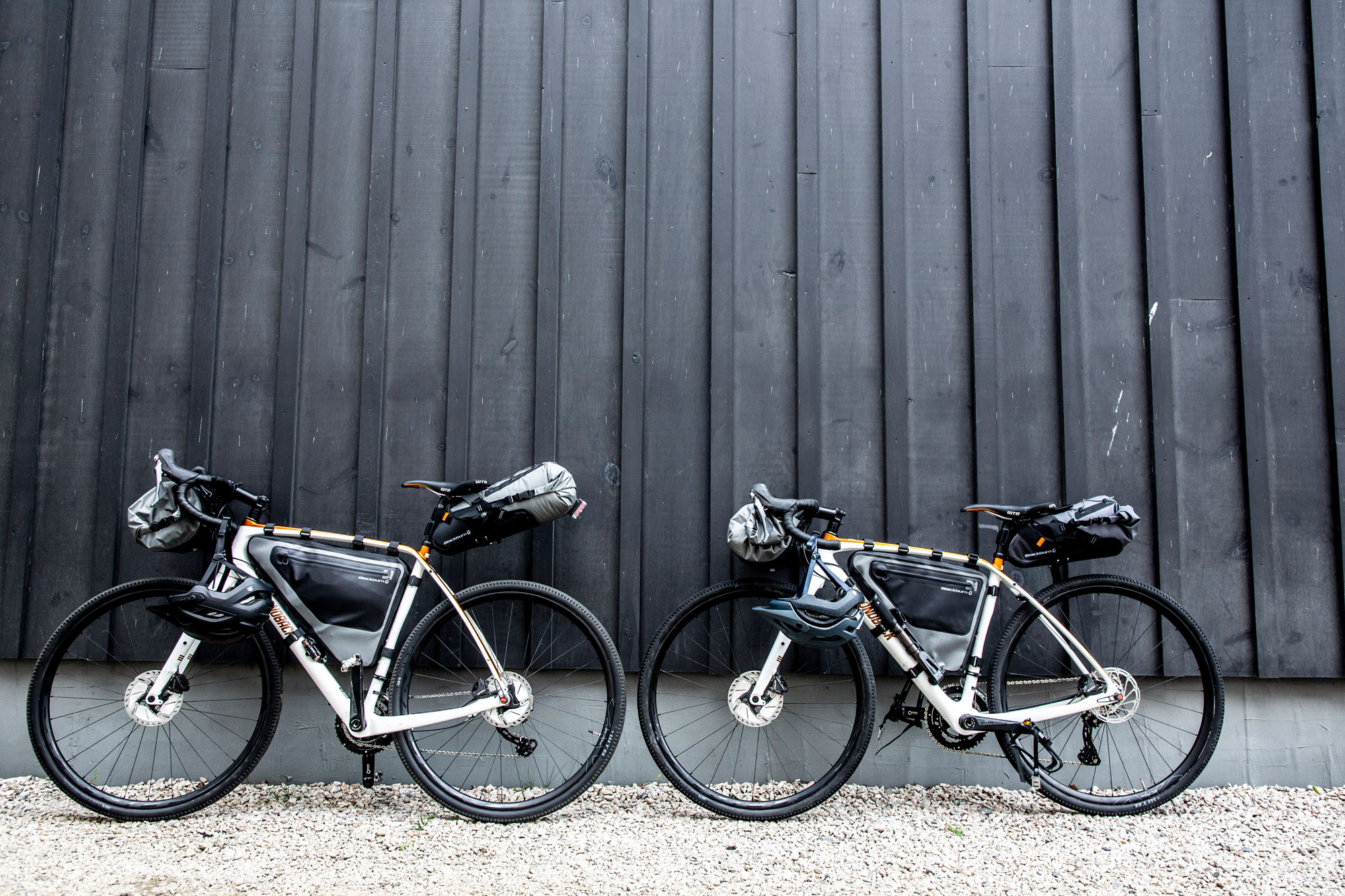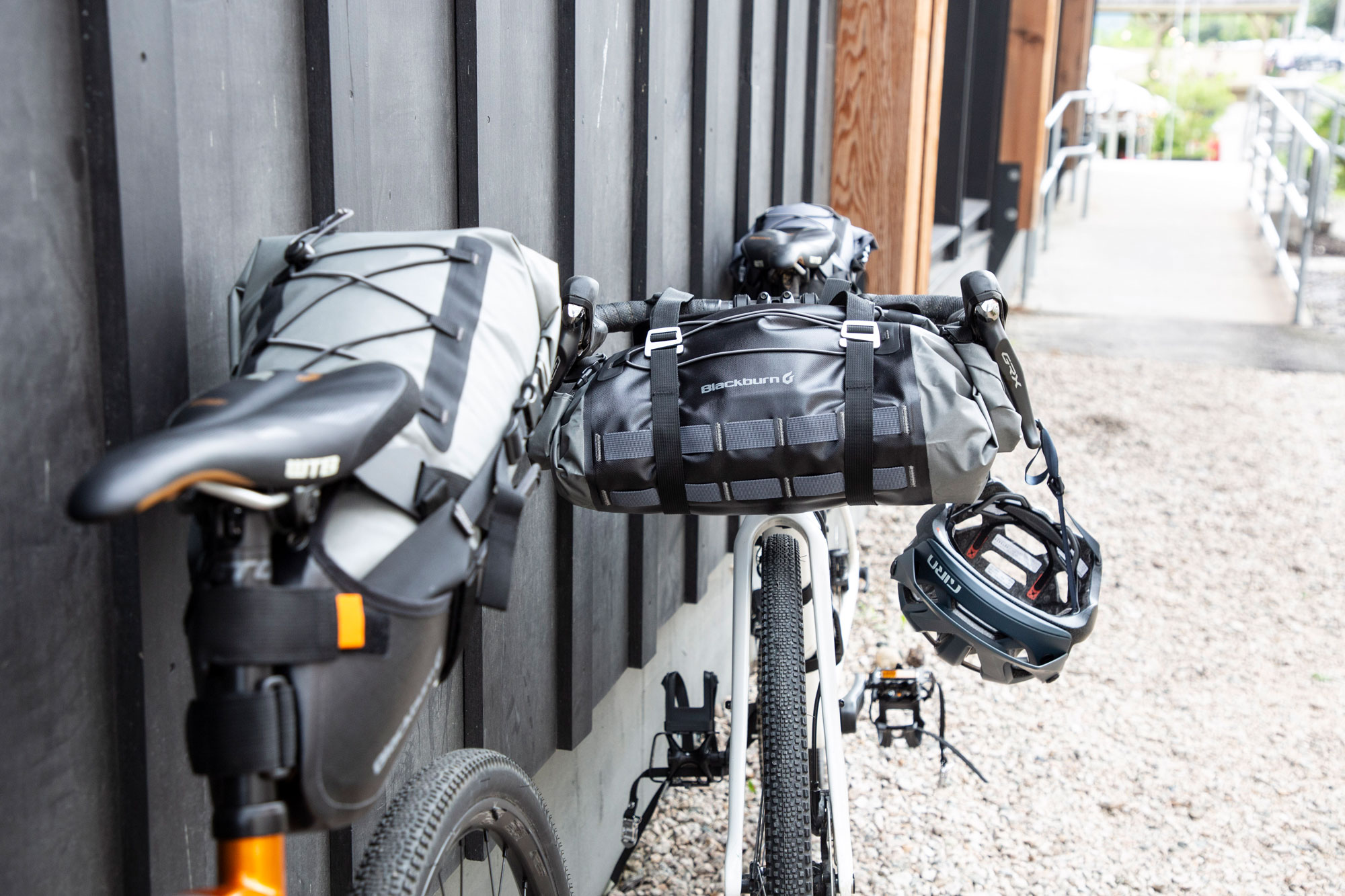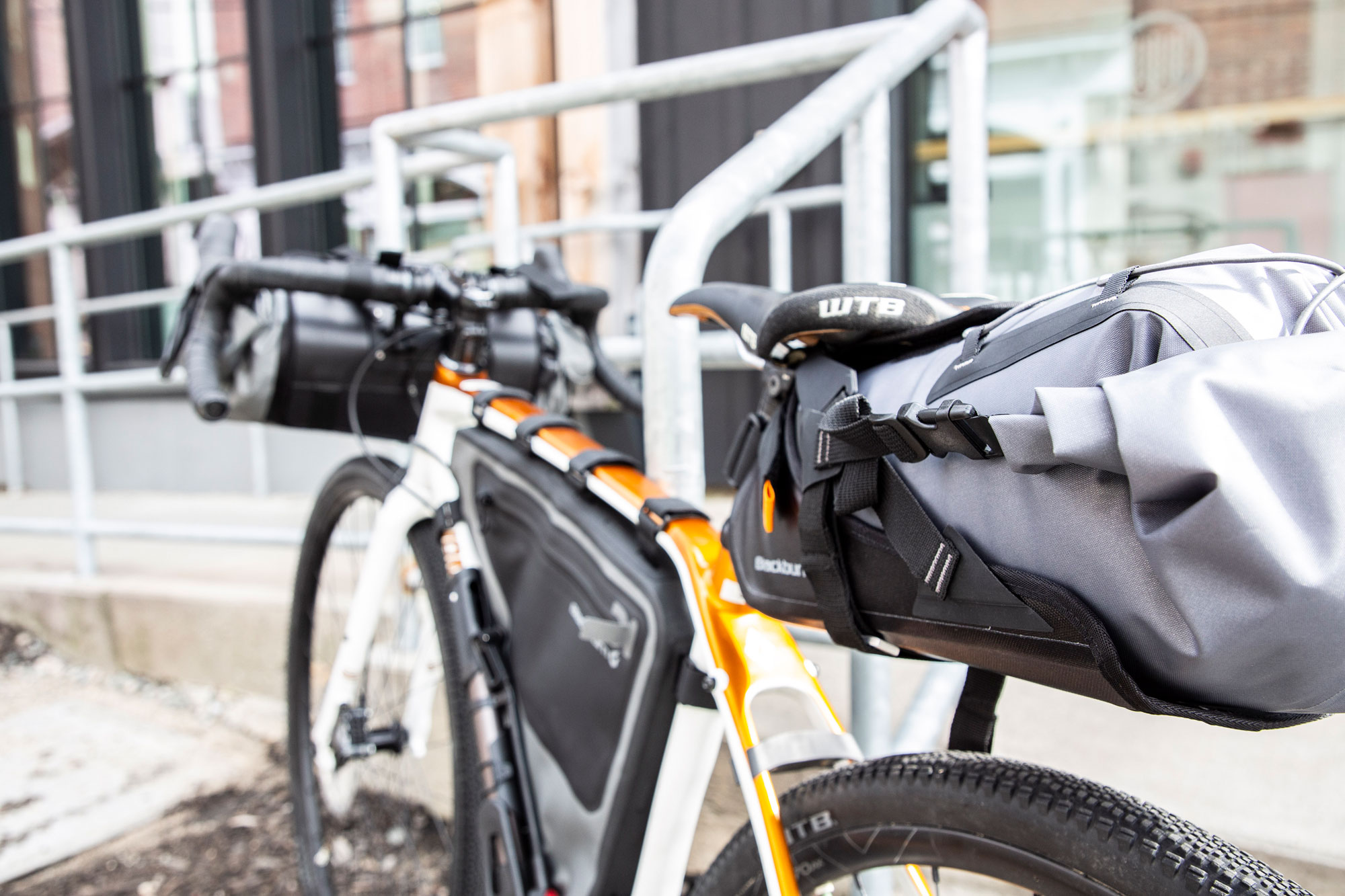If you’re a backpacker, making the transition to bikepacking should be fairly simple (or, at least, our inexperienced team hopes so). Most of the camping and sleeping gear you already have is exactly what you’ll need when you’re camping via bike. What’s different is how you pack: The bags you use, and where you’re putting everything. As we start packing for our Green Mountain Gravel Growler, here’s what we’re going to be carrying and how we’ll be organizing it.
Keep in mind that this trip has a plethora of food options along the way, and we’ve chosen to eat at breweries and other spots rather than carrying a ton of cooking gear and food.

The Bike
Our trusty steeds. These are maybe the most critical piece of gear on a trip like this. With so many moving parts, so many miles, and so many rough washboarded roads, our bikes can take a beating, so making sure they’re up to the task is priority number one.
Most of the team will be riding Diamondback Hanjo 8c Carbon rigs. These bikes feature meaty 700X37C tires for loose gravel, a 2×11-speed drivetrain perfect for powering up steep climbs like Lincoln Gap, and an all-carbon frame that both keeps things light and helps dampen the rattle of rough roads. We’re getting as much time on our rigs as possible before the trip, working out any kinks and making sure everything is running smoothly.
Bike Lights
We don’t plan on doing much riding at night but we will have the occasional ride along busier roads going in and out of towns. Blackburn’s Dayblazer lights are just enough to keep us seen in traffic and light up the path in front of us if we find ourselves out for a cruse at dusk.

Frame Bag
Bike bags are what makes bikepacking bikepacking. Over a long day, it’s far preferable to have bags specifically built for your bike over carrying a backpacking backpack on your back.
It all starts with a frame bag, which sits in the triangle of your bike’s frame. We’ll all be sporting Blackburn Outpost Elite Frame Bags. These bags are waterproof, burly, and easy to get at, which makes them perfect for stuff we’ll need to get our hands on more often throughout the day.
- Headlamp: The new Petzl Tikka Core is just enough light for getting around camp in the evenings and has a rechargeable battery that we can easily top off over the course of a couple days of riding.
- Bike Repair Kit: This will differ from bike to bike, but primarily consists of a bike pump and/or CO2, spare tubes or a tubeless repair kit, tire levers, a cycling multitool, chain lube, chain quick links, derailleur hangers, and general repair items like zip-ties, duct tape, super glue, pipe clamps, and lots and lots of Voile straps.
- Water Bladder: Some of us will be riding with Camelbak Crux 2L reservoirs stowed in our frame bags. The Blackburn bags have specific outlets for the hose to feed out, making it super accessible while we’re riding. Others will be wearing ultralight Camelbak Chase Bike Vests.
- Electronics and Gear: We’ll also be keeping things like power cables, power banks, and other electronics in our frame bags. Most of us will have our phones handily attached to our hadle bars.
- Toiletries: We’ll also carry dopp kits in our frame bags with things like sunscreen, lip balm, hand sanitizer, toothbrush and toothpaste, toilet paper, wet spies, chamois cream, and miscellaneous first aid supplies.
- Snacks: The most important thing. We’ll only carry enough for a day or so at a time, choosing to resupply along the way. But they’ll need to be super accessible.

Handlebar Roll
Our handlebar rolls, Blackburn Outpost Elite Handlebar Roll and Dry Bags, attach to the front of our handlebars and hold a roomy 14-liter dry bag. This is typically where most of our camping gear lives, making it easy to park the bike and grab when we roll up to our campsites to start getting set up.
- Tent: We’re taking Big Agnes Fly Creek HV UL Bikepacking tents on this trip. Not only are these tents incredibly light and packable, but they have a couple bikepacking specific features like shortened poles which makes them easier to fit in bike bags and between our handlebars.
- Sleeping Bag: For a summertime bikepacking trip in the Northeast, ultralight quilts like EMS’s Anomaly 30° Ultralight Backpacking Quilts are ideal. They back down super small, are versatile, and are plenty warm for early September in Vermont.
- Sleeping Pad: Typically I’ll wrap my sleeping pad around the inside of my handlebar roll’s dry bag then stuff my sleeping bag and tent in the middle to maximize space.

Seat Pack
Most of the clothing I’m not currently wearing will live in my seat pack: Extra underwear and socks, camp shoes, rain jacket, as well as anything else I’m bringing for around camp or to sleep in.
To carry more camera gear and keep it accessible, Lauren is replacing her seat pack with a rack and the Thule Shield Pannier.
Clothing
The goal for a five-day bikepacking trip is to bring as little clothing as possible, so finding clothes that can last you as long as possible is key. Wool shirts and socks won’t get as stinky or weird as synthetics, but exactly what you bring is obviously also determined by the climate and temperatures.
- Wicking shirt: After five days of biking, non-stinky wool is going to be my best friend.
- Padded shorts/chamois: If you’re much of a cyclist, you understand the value of padded shorts.
- Socks: For five days, I’ll probably bring three pairs: Two to rotate between while I’m riding, and one pair dedicated exclusively for sleeping.
- Bike gloves: Whether or not you need gloves is personal preference.
- Buff
- Hat
- Wind shirt: A lightweight jacket like the Mountain Hardwear Kor AirShell is one of the most versatile layers on a bikepacking trip: It’s the prefect weight for cool morning rides, cuts the wind on fast descents, and can handle a sprinkle or two.
- Bike shoes: Some of us are riding clipless, while others are riding flats. It’s all personal preference.
- Underwear: For the most part, we’ll be wearing chamois all day, but changing into a pair of underwear at camp is what every rider looks forward to during a long day.
- Warm hat
- Insulated jacket: This depends on the temps, but some kind of layer will probably be nice for around camp in the mornings and evenings in early September.
- Rain jacket
- Camp shoes: Something as simple as a lightweight pair of flip flops that allows you to get our of your bike shoes and air out your toes will do wonders, and they’ll fit under the bungee on top of our seat packs.
- Helmet: Safety first!
Keep in mind, our system is definitely going to change throughout the trip as we figure out what works, and no packing list of system is perfect for every person or every trip.
Ryan Wichelns
Ryan was goEast's only editor from its launch in 2016 until 2023. Now, he's the founding editor of Trails Magazine, the only print publication for backpackers and people who sleep in the dirt. When he's not wordsmithing, he's skiing, hiking, mountain biking, trail running, and more in Colorado's San Juan Mountains and beyond.




